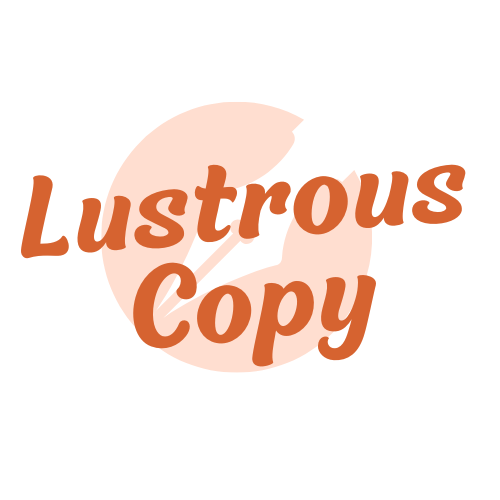When you decide to start a blog for your business, one of the most crucial aspects is consistency in creating valuable content.
This consistency not only helps in building trust with your audience but also keeps your brand top-of-mind.
However, maintaining a steady stream of blog posts can be quite challenging. You might struggle with organizing your ideas, managing your keywords, and even feel overwhelmed or uninspired when it comes to writing.
This is where a blog content calendar can be a game-changer. It’s a tool that helps you keep all your ideas organized and makes the content creation process not only more manageable but also more enjoyable.
In this blog post, we’ll delve into the reasons why having a content calendar for your blog is essential and what key elements to include in it.
But that’s not all – we’ve got you covered with a downloadable template so you can get started right away. Let’s dive in!
What Is a Content Calendar?
A content calendar, also known as an editorial calendar, is like a timetable for your content. It’s a tool that bloggers, publishers, businesses, and groups use to plan when and where they’ll share their content. This could include stuff like blog posts, emails, or social media updates.
Imagine it as a schedule that helps you keep your content organized. Instead of guessing when to post things, you plan it all out in advance. It’s a simple way to make sure you consistently share your valuable content with your audience, whether it’s on your blog, in emails, or on social media.
Why Should You Have a Content Calendar?
1. Keep you organized and on track

The most crucial reason to create a blog content calendar is to keep your content creation efforts organized and strategic. This detailed schedule is vital for maintaining order in your blogging activities.
When you use a content calendar in Google Sheets, you can conveniently view all your published and upcoming content in one place. This means no more digging around on your website to find specific topics or checking if you’ve used certain keywords before – it’s all neatly organized in Google Sheets!
Additionally, a content calendar allows you to plan which topics you’ll address and which SEO keywords you’ll use. It enables you to prepare content for major holidays and events well in advance, eliminating the last-minute scramble to create holiday-themed posts.
2. Helps maintain consistency
We all know that consistency is crucial in both business and blogging. However, consistently creating new content can be a challenge. Without a specific content plan, it’s easy to feel overwhelmed and struggle to publish blogs consistently on your website.
Many bloggers and businesses start strong but eventually stop because they run out of ideas or lose sight of their original focus. An editorial calendar is your ally in maintaining consistency in creating and publishing content.
Related: Consistency In Blogging: Why It’s Tough And How To Make It Work
3. Reduces stress and demotivation

One of the most stressful aspects of blogging isn’t the writing itself, but rather the research required to generate ideas, topics, and keywords.
When you’re staring at your laptop screen without a clue of where to begin, it can be extremely stressful and demotivating. This can turn the blogging process into a nightmare, making you reluctant to create any new content.
Having a blog content calendar alleviates this stress by providing you with a clear starting point. With ideas, topics, and keywords neatly organized in your Google Sheets file, you just need to write about the topic scheduled for the day, making the entire process more manageable and enjoyable.
What Do You Need to Include in Your Content Calendar?
1. Title or topic
This is where you jot down what you want to write about. You can either list the topic or the title of your upcoming blogs.
If you start with the topic, no worries; you can always refine it and replace it with your final, polished title later.
2. Keywords
Keywords are like signposts for search engines, helping them understand what your content is all about. In your content calendar, you should specify the SEO keywords you plan to incorporate into your blog posts. For each blog, focus on one primary keyword and note it in this section.
Related: Crucial SEO: Understanding Its Importance In Digital Marketing
Remember, your primary keyword should also appear in your blog’s URL, meta description, and within the blog post itself. This helps improve your content’s visibility and relevance in search engine results.
Example: Here’s a specific example related to a blog post about “Healthy Smoothie Recipes”
Your primary keyword: “healthy smoothie recipes”
In this example, the primary keyword is “Healthy Smoothie Recipes.” This keyword is crucial because it reflects the main topic of the blog post. When someone searches for healthy smoothie recipes online, your blog post is more likely to appear in search engine results because you’ve optimized it with this primary keyword.
To enhance the blog’s visibility and relevance:
- URL: Your blog’s web address could be something like “www.yourwebsitehere.com/healthy-smoothie-recipes.”
- Meta description: Make sure your meta description is about 120-158 characters: “Explore a variety of delicious and nutritious healthy smoothie recipes perfect for a quick and wholesome snack. Learn how to blend your way to a healthier you!”
- Within the blog post: Ensure that the primary keyword, “healthy smoothie recipes,” appears naturally throughout the blog post, especially in headings, subheadings, and the content itself.
3. Category
Think of this as sorting your content into different baskets. It’s all about deciding which types of topics will be most interesting to your potential clients or your client’s customers.
You should start with just 3 or 4 categories that are closely connected to the product or service you’re offering.
This makes it easier for your audience to find what they’re looking for and keeps your content neatly organized.
Example: Let’s say you’re creating a content calendar for a website that offers dog training services. Here’s an example of categories you could include:
- Basic obedience training: In this category, you can cover fundamental training techniques such as sit, stay, and leash walking. You might also discuss common behavioral issues like jumping or barking.
- Puppy training: Here, you can focus on training specifically tailored to puppies, including housebreaking, socialization, and crate training.
- Advanced training tips: This category could include more advanced training topics like off-leash training, agility training, or tricks and commands beyond the basics.
- Behavioral solutions: Discussing common behavior problems like aggression, separation anxiety, or fear and providing guidance on how to address them effectively.
4. Length
Consider how long you want your blog posts to be. You can aim for around 500 to 1000 words for each post.
However, you can adjust the length based on factors like the complexity of the keywords you’re targeting. Some topics may require more in-depth explanations, while others can be covered concisely.
Related: Long-Form Vs. Short-Form Content For Your Business Needs
5. Call-to-action
Think about what you want your readers to do once they’ve finished reading your post. Do you want them to take a specific action, such as shopping a sale, signing up for your email list, or following you on Instagram?
Plan out the intended action for each blog post, and then guide your readers in that direction. A clear call-to-action encourages engagement and helps you achieve your goals, whether it’s increasing sales, growing your subscriber list, or boosting your social media presence.
6. Draft date
The draft date is the day when you finish writing your blog post. It’s a good practice to set this date at least 7 days before your planned publish date.
This buffer time gives you the opportunity to brainstorm the topic thoroughly, write the blog, and allows for more extensive editing.
You can also use this time to carefully select images and visuals that complement your blog post.
7. Publish date
The publish date is when your blog post will become live on your website. You have two options: you can either post it on that day or schedule it to automatically publish if you’re working ahead and want to maintain a consistent posting schedule.
Consistency is key for your readers. Try to stick to a regular posting schedule so your audience knows when to expect new updates.
For instance, you can choose to publish your blogs on specific weekdays rather than weekends. This predictability helps in building trust with your readers and keeping them engaged.
Download the Content Calendar in Google Sheets!
Wrap It Up
In the world of blogging, where ideas flow freely and the online landscape is always changing, a content calendar becomes your trusted guide. It’s like a map that helps you navigate the creative and strategic aspects of blogging.
With a content calendar, you don’t just sort out your thoughts; you also ensure that you keep a consistent pace in your content creation journey. You can easily manage what you want to write about, the important keywords, and when to publish – all while giving yourself more time to focus on creating valuable content.
Whether you have experience with blogging or just starting out, remember that a content calendar isn’t just a tool; it’s your path to reducing stress, boosting motivation, and ultimately, crafting content that captures your audience’s attention.
Now that you know why and how to create a content calendar, it’s time to take action. Download our Google Sheets template, customize it to fit your needs, and start your blogging adventure with organization and enjoyment. The online world is ready for your voice, and with a content calendar by your side, you’re well-prepared to leave a lasting impact. Happy blogging!




